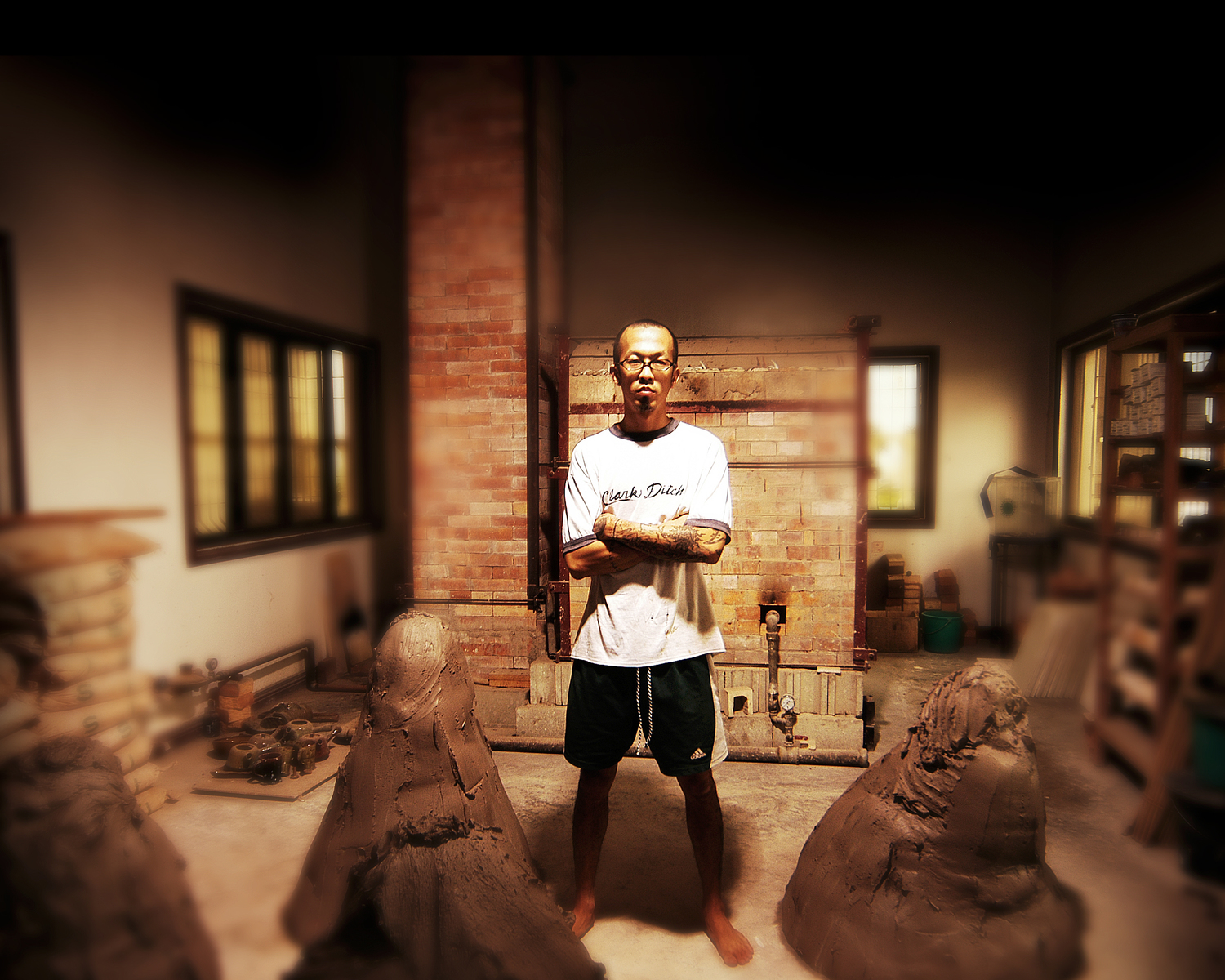"Calling the pot art" The Philippine Star Magazine November 7, 2004 by Raymz Maribojoc
What makes an artist?
Jon Lorenzo Pettyjohn, 54, who has been working with pottery for more than thirty years, readily admits that he doesn't know. "Who's to say?" he asks. "Would a painter who isn't very good be more of an artist then, say a very good pottery or any other craftsman?" Here Jon touches on the old argument of art versus craft. "A lot of people still have this idea that art is painting, or sculpture, that art isn't functional (as opposed to decorative). There's this sort of elitist thinkin going on, but slowly, we're starting to change that."
In a country where pottery has been emerging as a "legitimate" art since only a few decades ago, he is among a growing number of potters working to increases the awareness of clay as a medium, of the potter's wheel being capable of self-expression as much as canvas or marble.
As co-founder of the Pettyjohn-Mendoza Pottery School and president of Putik (Association of Philippine Potters, Inc.), Jon has been part of the movement for the recognition of ceramics in the Philippines as art since he has moved here in 1978.
In 1972, he studied in Escuela Masana, a school for the arts in Madrid, and apprenticed for two years in pursuit of his craft. When he visited the Philippines in 1976, he decided the country would be a good place to settle. He also met and married Tessie San Juan, who was also working in clay.
In the beginning, though, interest began to mount. After a few exhibitions, people began to drive to their studio in Pansol, Laguna, asking Jon and Tessie to teach them. Jon was at first reluctant to do so, wanting to prioritize his own work. "I didn't really want to teach. Then there were these people really driving out, sometimes all the way from Manila, and i'd teach a few. Eventually they started taking over the studio," he remembers laughing.
As a result, in 1994 he opened up a school in the Madrigal Art Center, where he met promising young potter Hadrian Mendoza. "He wanted to learn all about it, and he'd come up to me with questions, and he was very god at what he did, even back then. Eventually he asked to work with me as an apprentice, and then he moved to the states after a few years." When the school moved to Makati in 1998, Jon invited Hadrian back to the country to help him with teaching, and founded the Pettyjohn-Mendoza Pottery School.
By that time Hadrian and Jon were participation overseas in international pottery festivals, and were being exposed to other ceramic cultures. They realized that more had to be done to put the Philippines on the pottery map. By 2003, they and a few more pottery artists and enthusiasts formed Putik, the first organization of its kind in the country, to promote their art and serve as a unified body for the exchange of ideas, resources, and support. With dozens of members, not just artists but people from all fields, Putik has proven to be a success, so far.
"Now, we're so organized," remarks Tessie. "Before the foundation, it would take forever to get anything done- exhibits, demonstrations. Now we work so fast!" With more than thirty members, and more coming in, Putik is now poised to announce its presence to the country: from now until December, they will be holding the First Philippine Pottery Festival in Greenbelt, a two-month long celebration with exhibits, pottery demonstrations and classes to encourage more people to get into ceramics.
They're also starting to make their way into schools. They now hold classes at the Philippine High School for the Arts in Mount Makiling, Los Banos, and are working with the UP College of Fine Arts to develop a curriculum for pottery.
All this, and all of these years are leading o the promotion of Philippine pottery. "Eventually, we (Putik) want to be recognized internationally. We'd like to participate in festivals, to ask foreign potters to come here and share their ideas, to be able to help the local artists."
With big plans for the future of pottery in the Philippines, they're also content with enjoying what they do. "it's great," says Jon. "I get to wake up every morning and look forward to doing what I like to do. We're all still having a good time."
"I used to consider myself as an artist, when I was young, but now I'm not so sure. I think art is really all about perfection, whether it's in paint, or clay, or whatever. Actually, I don't consider myself a good pottery... That's why I keep going at it, trying to attain that level of perfection."
Now, with Putik, the school and an increasing number of students, pottery is on its way to receiving wider recognition in the country. Jon, Tessie and Hadrian have their hands full molding their students as they mold with clay on a wheel.
